I’m not someone who’s drunk much of the AI Kool Aid. I have sipped it. Swilled it around my mouth like you would an 1869 Château Lafite Rothschild.
But I’ve seen enough cult documentaries to know you should spit it back into the glass.
Do I love the opportunities it’s provided me in a work sense? Absolutely. Do I think it’s fundamentally shifted the marketing ecosystem? No. I think it’s expedited what’s been happening for some time.
- Reddit’s resurgence is search-dominated.
- The booming creator economy shows people trust people.
- Word of mouth still travels.
- Content still goes viral.
- People don’t click unless they have to.
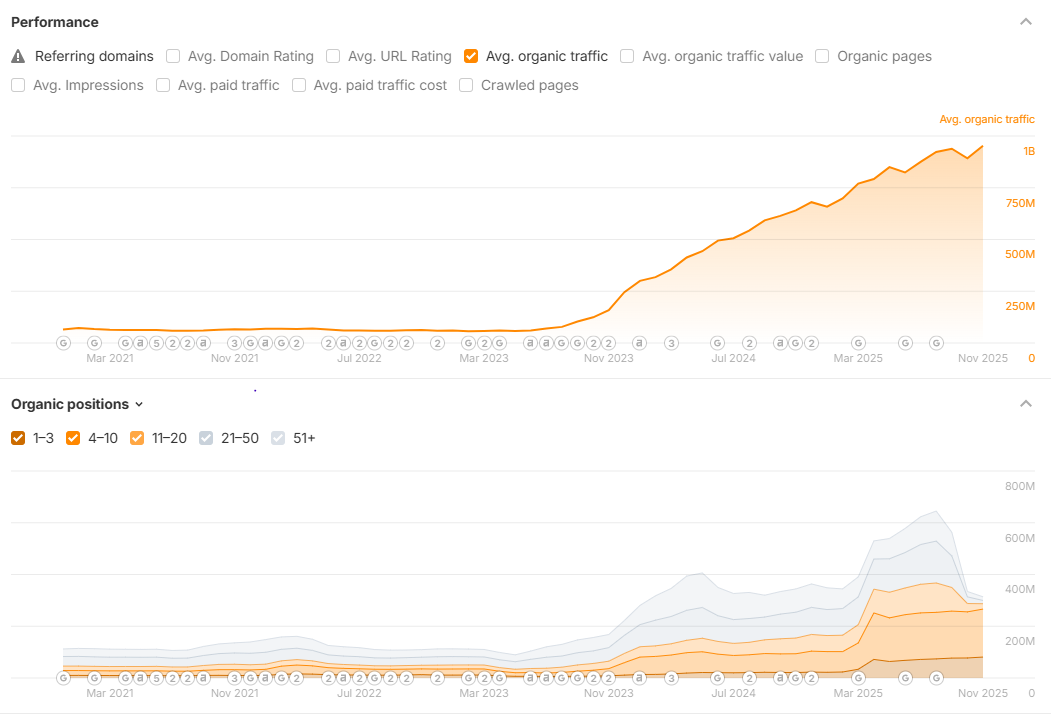
LLMs provide a good proxy as to how you’re seen online. And they really lean into review platforms and strong brands. Associating your brand with your core topics, removing ambiguity, and strengthening your product positioning is never a bad thing.
It’s not just about search anymore. In reality, it never should have been. It’s about connecting. Generating value from the different types of media.
TL;DR
- The search customer journey spans TikTok, YouTube, Instagram, and everything in between.
- Last-click attribution is outdated: BOFU platforms get the credit, but creators, communities, and discovery platforms do the heavy lifting.
- AI hasn’t broken anything, it’s just exposing how messy, multi-platform, and people-driven it’s always been.
- Brands win by understanding their audience, investing in creators, and building experiences that cut through an enshittified internet.
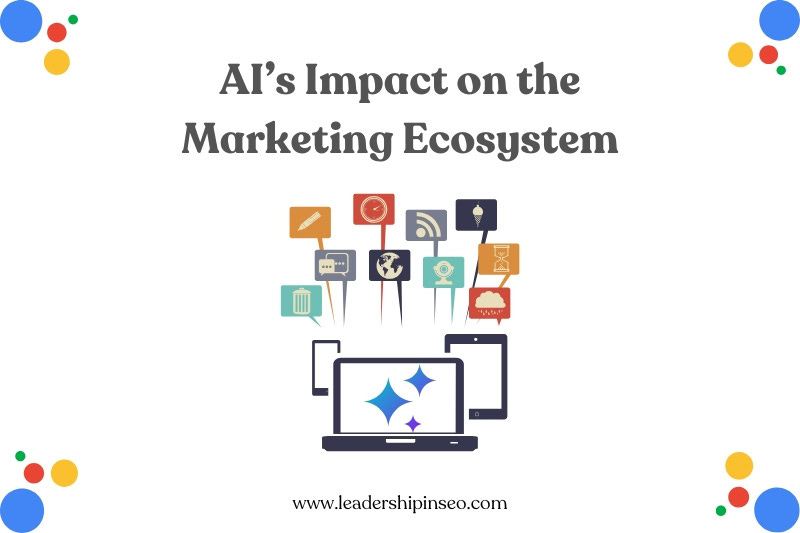
The Customer Journey Has Changed
True. But it’s been changing for a long time. Paid channels are becoming more expensive, owned channels like search send fewer clicks (mainly a Google-driven mechanic), and earned channels are looking more like the golden ticket to corporate stooges.
The majority of brands use last click attribution (gross, get away from me). A method that overvalues search. For the last decade or more, there have been discovery platforms that are more valuable than search – TikTok, YouTube, Instagram. Pick one.
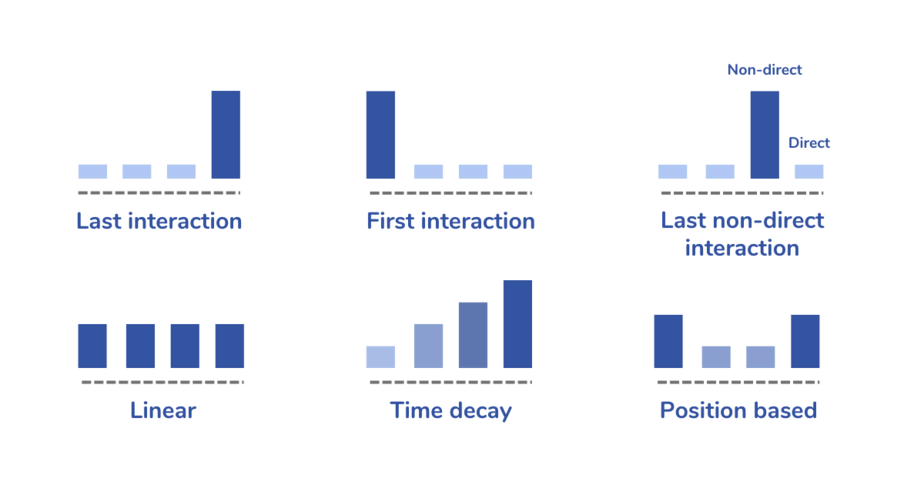
We tend to use search for finding products, brands, or stories we know exist. And for comparison, related searches. But as AI Mode rolls ever closer and Google looks to greedily take on middle of the funnel queries, Google’s role as a discovery platform will change. Theoretically, at least.
Like every big tech company, enough is never enough, and they don’t want to send you clicks. Unless you pay for them, of course.
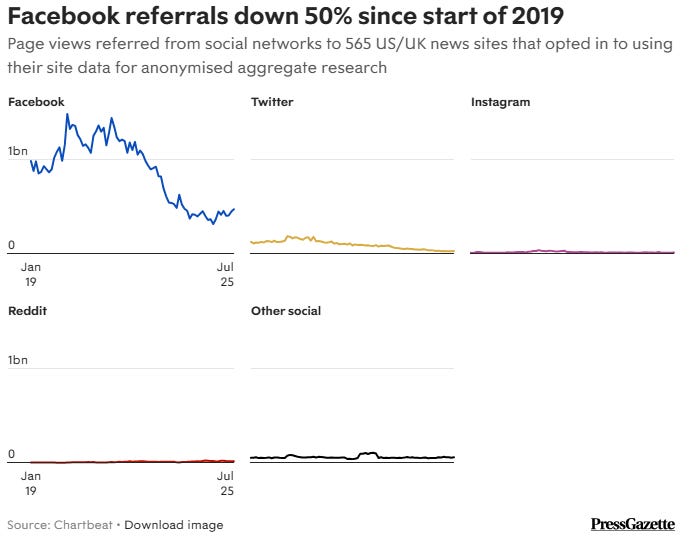
Search Is No Longer A Single Platform Journey
The Rise at Seven SEO and Data teams analysed 1.5 billion searches across five channels of the most-searched keywords on the internet and found that:
- A buying journey can take anywhere from two days to 10 weeks, with up to 97 interactions along the way.
- Google only accounts for just 34.5% of total search share.
- YouTube (24%), TikTok (16.7%), and Instagram (20.9%) make up more than 60%.
- The average consumer now uses 3.6 platforms before making a purchase.
But Google isn’t really a discovery platform. Maybe a bit. Google Shopping. Some comparison searches. But it’s not what anyone is there for.
Someone sees a product on Instagram or TikTok. They read a review of it on Reddit (probably through Google, albeit with a branded search) and watch videos of it on TikTok or YouTube.
They might even buy direct or via Amazon. At best, they perform a branded search in Google.
Now, tell me, last click attribution makes sense.
I think it’s worth noting here that so many of these other platforms are driven by a clickless algorithm. Google requires a click. A fundamental search. The others have homepages that stare directly into your soul.
I don’t think any of this is new. And I suspect it’s been a while since search was a single platform journey. But it depends on what you define as search, I suppose.
Google’s Messy Middle is about right. We have been living through an era of marketing desperately tied to trying to track every penny. Something that has been a near-impossible job for some time. At some point, you just have to sit down, try to know your audience better than anyone else, and have at it.
We need to influence clicks via search before that happens. Brands have to focus their time on the right channels for their audience. Not just search. That’s why knowing your audience and using an attribution model that doesn’t just value the BOFU click matters.
But Has AI Been The Catalyst?
Probably a bit. Behavior has been changing long before LLMs hit the public arena. It’s changed because people have better options. More visually decisive. More authentic. The creator economy has boomed because people trust people.
- When I’m doomscrolling on the bog or on the tube (praise be to the 5G gods), I might get served a new product.
- If I want real opinions or reviews about said product, I might go to Reddit (albeit through Google) to see what someone thinks. Well, I wouldn’t because I’m an adult with a wife and a mortgage, but you see my point.
- I might subscribe to specific Substacks or creators who use and speak about the product.
- My favorite LLM might give me product ideas (which I would check very carefully).
- Hell, I might even see something IRL on the tube.
A lot of this ends with a Google search. Maybe all of it. Google is a navigational engine. Hence, the last click attribution issue. I suspect the last click isn’t the most important session in the majority of cases.
Unless you’re young, lazy, or both, AI just won’t cut the mustard. Hell, Google’s kingpin tells you not to blindly trust AI. Even the guys fundamentally selling us this stuff are telling us it has some pretty serious flaws.
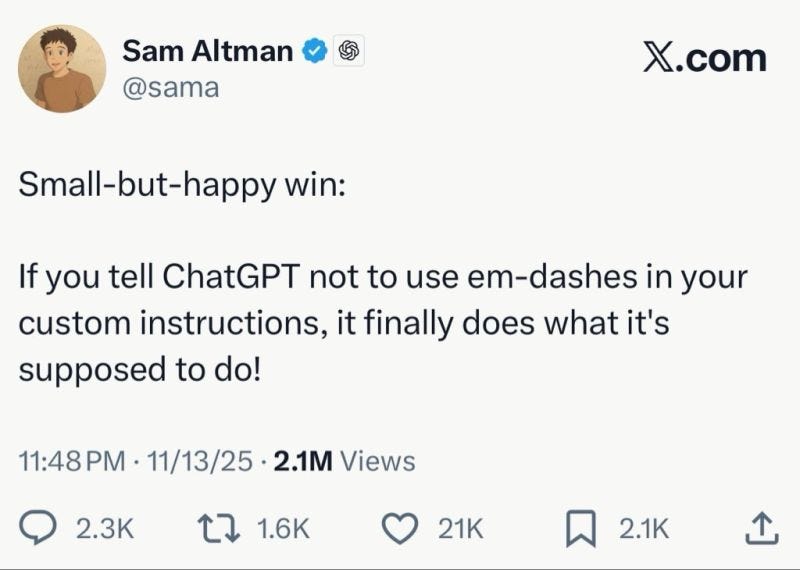
It’s one of the reasons user journeys are so much more complex and elongated.
- We have more effective platforms and opinions than ever.
- We have more shitty platforms and opinions than ever.
Cutting through the noise is everything. For people and brands. So you have to learn how to build brands and products that are bold and get the right people talking and sharing.
90% of marketers say creator content yields stronger engagement and 83% link it to more conversions. And 61% of consumers trust recommendations from creators more than they trust brand advertising.
The algorithms trust people because people do.
Channel-By-Channel Breakdown
Things don’t happen in a silo. Call me old-fashioned, but I think we’d all do well to work together as a marketing department. AIOs don’t just affect search. They have a knock-on effect on the entire ecosystem, and it’s important we understand the what and the why.
SEO
Where do we start? I’ll try and be brief. The most obvious and direct threat is zero-click search, which has been on the rise for some time. While AI hasn’t been the key driver of this, it has and will continue to reduce referral traffic.
- AIOs have significantly reduced CTR, particularly for informational, TOFU queries.
- AI Mode is there to steal middle of the funnel clicks to “help users make the right decision.”
- LLMs offer something of an alternative to search. Although based on what people really use them for, I think they are complementary, rather than a replacement.
I think AI has done some very interesting things in the SEO space. Vibe engineering platforms like Cursor and prototyping platforms like Lovable have opened up new worlds.
If you can wade through the shit, you can do some brilliant things.
Then you have Profound’s Zero Click conference, where one of the speakers said he felt sorry for anyone working in SEO. According to this turdy savant, there’s very little crossover between SEO and insert favorite acronym before proceeding to discuss lots of SEO ideas from 2012.
People who just do not understand marketing, SEO, the internet, or people. These are the guys driving the enshittification of our day-to-day lives. (More on this later).
PPC
PPC and SEO are ugly cousins, really. We operate in the same space, we target the same traffic. So it stands to reason that AIOs and AI Mode significantly impact paid search.
If you can believe it, it’s broadly a negative.
I know. I, too, am stunned.
Thanks to Seer Interactive, we have near-conclusive data that proves how serious this impact has been. When an AIO is present, and you are not cited, clicks are down over 78%.
Even when there’s no AIO present, paid clicks are down 20%. This is disastrous. Customer acquisition becomes more expensive, and the blended CPAs are significantly more expensive.
This may show a real and significant shift in user behavior. Users are becoming so used to getting what they want from a TOFU search, they don’t even follow up when an AIO isn’t present.
Attention is slipping everywhere.
Social
We’ve seen the rapid rise of disinformation in search. Google’s been promoting fake content to millions of people on Discover and has been struggling to block them for some time. Gaming the system isn’t new. PBNs, expired domain abuse, link schemes. You name it, it’s working.
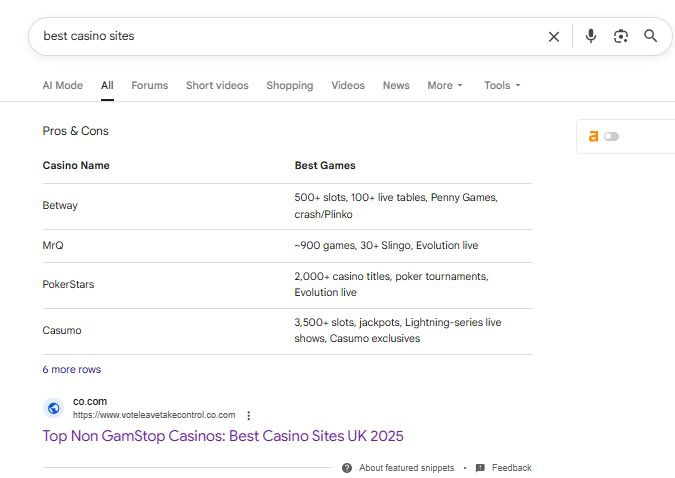
Thankfully, the Vote Leave Take Control team have put their talents to good use and can now tell me what casino site should I choose.
The scale is unprecedented. Bullshit flies everywhere.
And that’s where social comes in. Globally, the average person spends 2 hours and 24 minutes on social media every day. That’s a lot of time to be hit by fake news. Personalized fake news, too. So maybe it’s not a surprise that social use has been on the decline for the last couple of years.
According to this study by the FT, social media use has decreased by 10% and has been driven by (*shakes fist*) the youth. I think these platforms are a shell of what they once were. The connections they provided have been replaced by absolute bullshit.
They will do literally anything to get and hold your attention. Except help you stay in touch with people or watch something that isn’t AI-generated. The content quality bell curve we see in search is mirrored by the enshittification of social channels.
- First, the platform attracts users with some bait, such as free access.
- Then the activity is monetized, bringing in the business customers with no thought for the user experience.
- Once everyone is “trapped,” the value is transferred to their executives and shareholders.
People with no understanding of marketing or people thinking that auto-generated comments will boost their profile on LinkedIn. Businesses using AI to cut corners to generate meaningless bullshit and throwing it at me. See Coca Cola advert for reference.
Nothing says happy holidays like being fired for an incompetent robot.
The lights are on, the wheels are turning, but nobody is home. Or cares. The Mark Zuckerburgs of the world are, hopefully, turning people off hyper addictive brain rot.
Impressive, I know. Thank god for Ryan Air.
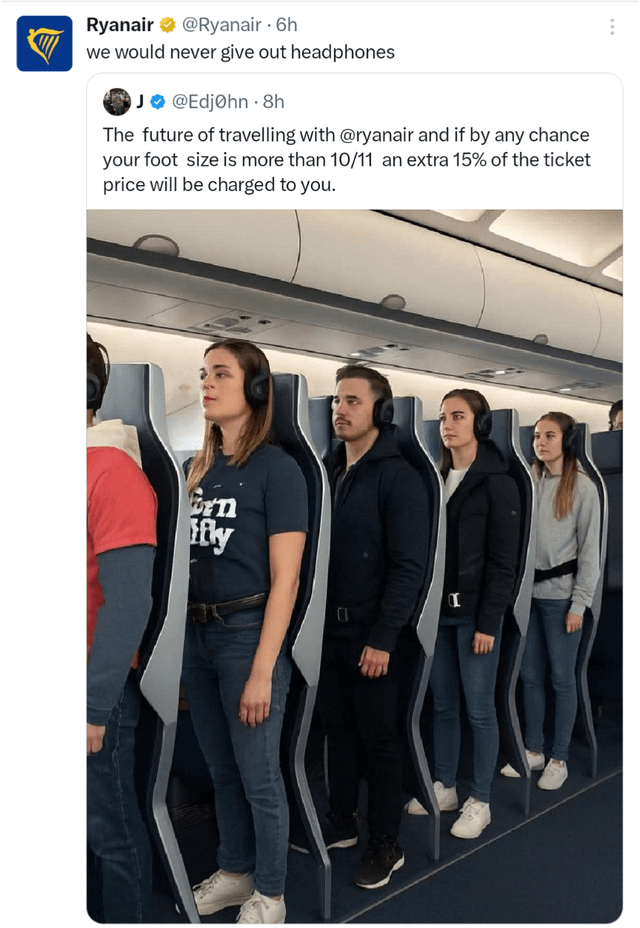
As email is an owned channel, there’s not an obvious issue with generative AI. However, the Litmus State of Email Report shows the top roadblocks and operational challenges encountered by teams.
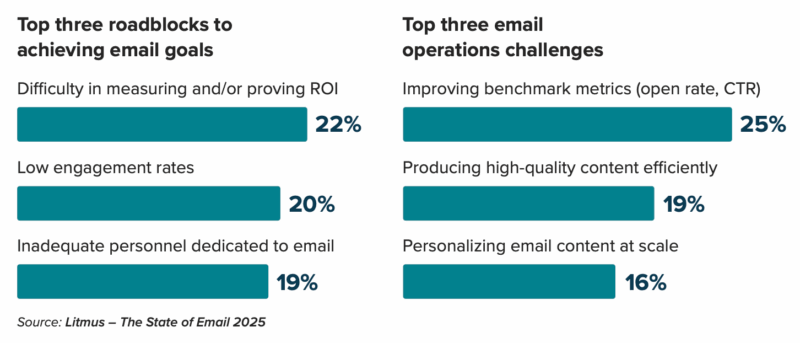
AI makes all of these roadblocks worse. Crummy, personality-devoid content churned out at scale will lower engagement. And it doesn’t take a genius to figure out that execs would love to save on personnel.
Operationally, you’d think AI will help. But if producing high-quality content at scale and improving your core benchmarks are fundamental issues, I’m not sure AI is the answer.
Personalization, research, and distribution. Absolutely. Creating content that draws real people in and engages with them. Color me sceptical.
Paid Vs. Earned Vs. Owned
This is all about the funnel. If it becomes more expensive to acquire customers in their unaware/aware phase with paid campaigns, your owned and earned channels need to work harder. They need to work harder to increase your conversion rate.
- Paid campaigns or projects are designed to do two things: reach a newer potential audience and retarget an existing, highly qualified one. But they’re becoming more expensive. Especially in a PPC sense.
- Most sensible companies are trying to build their email databases off the back of search and organic social. Owned media is simultaneously under threat and incredibly valuable.
- Earned media – public exposure through word of mouth and shared content – is arguably more important than ever. People really trust people’s opinions.

What Should You Do?
As an SEO and a marketer, you should focus on creating real connections with people. Understanding your audience. Leveraging people that have influence over your audience. Build, work with, and promote brilliant creators and own your audience data internally.
Squeeze every last drop out of your content. Cut and share it in appropriate formats across multiple channels.
Email is almost certainly the most applicable channel for most brands. You actually own it. Then figure out the role your brand plays in that journey. Create a great user experience on and off-site. Make sure it’s well documented, and you own everything in your control. Speak to your PPC and social teams to understand the challenges they’re having.
- Help Center.
- FAQ and product pages.
- ToV consistency and brand guidelines.
- Reviews and complaints (On and off-site).
- Technical site quality.
- Content quality.
- Large-scale, TOFU campaigns.
This isn’t just about marketing. Or LLMs. They are just a good proxy for how you are seen on the internet.
It’s about working together as a marketing department with a shared goal of creating and amplifying brilliant experiences to the right people. Maximising the value of your owned channels, to reduce the reliance on paid, and doing things that create brand advocates and cause your earned media to soar.
There’s an opportunity here to do great things!
But whatever you do, don’t forget about good quality SEO. It’s the primary purpose of our job and it still works.
More Resources:
- Google AI Overviews Impact On Publishers & How To Adapt Into 2026
- Consumer Trust And Perception Of AI In Marketing
- AI Overviews – How Will They Impact The Industry? We Ask Pedro Dias
This post was originally published on Leadership in SEO.
Featured Image: MR.DEEN/Shutterstock


